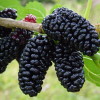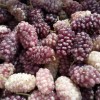Secrets of growing and caring for mulberries in the middle lane
Content
Varieties and varieties
Tasty and healthy berries nowadays can really be grown on the territory of the Nizhny Novgorod and Moscow regions, in the Middle Volga region, in the Stavropol and Krasnodar regions. Even the ancient Chinese have adapted to make paper from its bast. Currently, wood is used to make musical instruments, cooperage products and various handicrafts. Berries are suitable for making delicious juices, vinegar, jelly, wine and even vodka. It is customary to add them to the dough in a dried form. And the leaves are needed as food for the silkworm, the pupa of which gives a person valuable silk.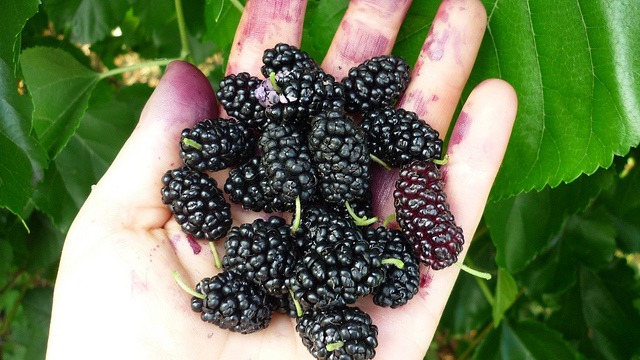
About 17 species of mulberry are known. It is customary to grow white and black mulberries on the territory of our country. They differ in the color of the bark. White is considered more frost-resistant. Black berries have excellent taste characteristics.
Since the culture is unpretentious in terms of care, it grows normally even in the presence of a high gas pollution of the environment, it is simple in terms of formation and has excellent decorative effect, beautiful hedges are made from it, and whole alleys are created. For these purposes, such types of crops as weeping, golden, large-leaved, spherical, dissected-leaved, pyramidal are often used.
For central Russia, it is recommended to choose such frost-resistant varieties as Staromoskovskaya, Korolevskaya, Vladimirskaya, White honey. For example, the Old Moscow mulberry has an unusual spherical crown. Its cultivation can be carried out in the form of a weeping form. The berries of this variety are highly sweet, black in color and grow up to 3 cm in length. Such a culture does not need the immediate proximity of pollinating plants, as it is self-fertile.
Video "Description"
From the video you will learn the description of the fruit tree.
Landing
Before planting seedlings, you should take a responsible approach to choosing a suitable plot of land. This should be a well-lit, sunny place, preferably on a hill (so that there is no stagnation of moisture), also protected from wind and drafts. Before planting, you need to dig a hole, the width of which will be about 0.8 meters, and the length - about 0.5 meters. It is required to prepare a certain soil composition. It usually consists of 1 bucket of rotted manure, 70 grams of superphosphate and 30 grams of potassium salt.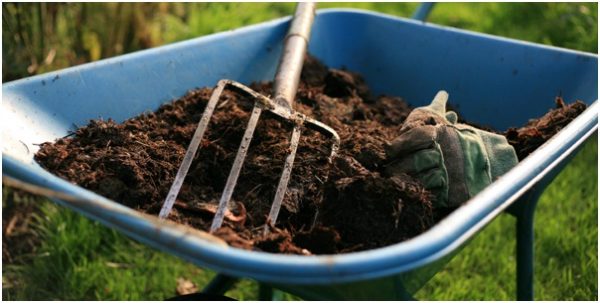
Further, mandatory watering of the tree is required. It is still impossible to do without creating mulch. It needs humus. The layer of mulch in the root circle should be about 5 cm. At the beginning of autumn, it is required to pinch young green shoots. This procedure aims at stopping their subsequent growth. It is recommended to create a tree on the existing one and a half meter trunk. To do this, unbend the branches and support them with pruning. Then the care of the crown will be simplified, and when harvesting, the fruits will be at normal height.
Fertilizers and feeding
A young seedling is usually sufficient with those useful elements that were introduced into the soil during planting. But during the fruiting period, the tree needs enhanced nutrition. Therefore, the time has come to make top dressing. Such an event is especially relevant in the presence of sandy soil. When the soil thaws normally, fertilizer with a high nitrogen content should be applied.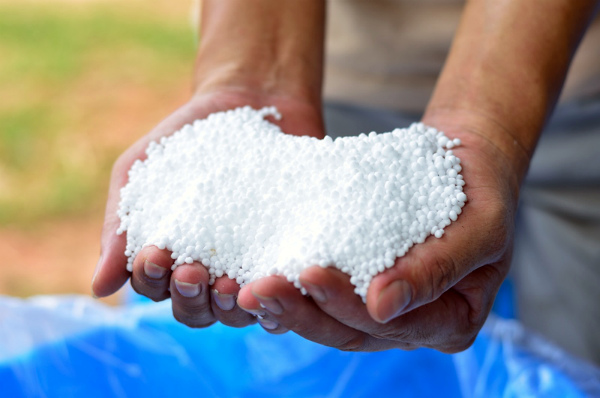
Nitrophoska, bird droppings and mullein have shown themselves well in practice. The consumption of nitrophoska for each square meter is about 50 grams. This top dressing can be reapplied if the need arises. This should be done in early June. In the autumn, fertilizers applied to the soil with an optimal content of phosphorus and potassium give excellent results.
Reproduction
On your own plot, it is possible to get a new specimen grown from seeds, root shoots, cuttings, cuttings or a cultivar by grafting.
To obtain a stock of varietal seedlings, breeders use seeds. Most often, white mulberry is propagated in this way. Before sowing, the material needs to be stratified. It is recommended to plant seedlings for permanent residence in a few years.
And after a year, it is permissible to re-graft them with a cuttings from that tree, which is capable of delighting the owner with tasty fruits and a high degree of yield.
Another reproduction of this culture is carried out by grafting. To do this, it is customary to graft varieties on the stamps of 1 or 2-meter seedlings, which can then be formed as a ball or as a tree with a weeping crown. You can also create trees that have several varieties on the same stem as a result of grafting.
Own-rooted seedlings can be obtained by propagating the culture with green cuttings. But in practice, this is not so easy to do, so gardeners often tend to propagate by layering. Remember that propagating mulberries with lignified cuttings is still an art.
To propagate the plant by layering, the mother culture must be cut into a stump, and a well-developed growth for the next year is bent down to the surface of the earth in a horizontal position and buried in. During the summer period, it is necessary to huddle the vertical shoots. This is done a couple of times. With the onset of autumn, ready-made seedlings must be planted. If the mulberry normally enters the fruiting period for 7 - 10 years, then the grafted seedlings are able to do this somewhat earlier.
Diseases and pests
Diseases of this culture are usually divided into those that are of a viral and fungal nature. These are root rot, powdery mildew, tinder fungus (a fungus that feeds on wood), curly small leaves (the reason for its appearance is sucking insects), brown spot, bacteriosis. The reasons for the appearance of these diseases may be the introduction of large amounts of nitrogen, a lack of nutrients, and excessive thickening of the crown. The culture can be annoyed by such pests as the bear, wireworm, larvae of the May beetle and the white American butterfly, spider mite, and comstock worms.
Due to the caterpillars of the American butterfly, the tree can lose its leaves. Branches with nests, if pests are detected, are subject to immediate cutting and burning. Chlorophos is used for protection. It also helps against the mulberry moth. Such a caterpillar appears during the period of bud swelling. If a characteristic cobweb is found on the back of the leaf, a spider mite is interested in your tree. Since it tends to suck juice from the culture, the result of the vital activity of the parasite is the coloring of the foliage in a brown color and its subsequent fall.
Measures should be taken quickly, as the tick multiplies rapidly. Spraying the culture with thiophos is considered effective. For young plants, root damage is dangerous, which is often caused by a bear, wireworm and beetles.Pathogens of various infections also penetrate the culture through the resulting wounds. Mulberries are of great interest to birds who love to feast on them. For protection, a special agrofibre or a mesh with fine meshes helps.
Planting and Care Video
From the video you will learn how to properly plant and care for a mulberry tree.

